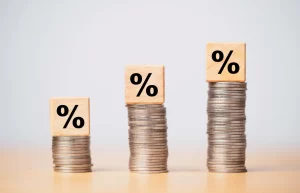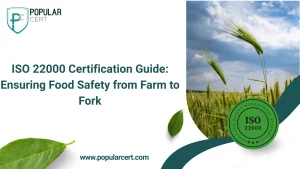
Coffee that wakes up the farmer as well as the drinker. Cocoa that doesn’t leave a bitter taste of exploitation. Timber that builds a future, not just a house. This isn’t a utopian dream; it’s the burgeoning reality of the soft commodities market. And honestly, it’s becoming less of a ‘nice-to-have’ and more of a ‘must-have.’
Let’s dive in. Soft commodities—the agricultural goods we grow, like coffee, cocoa, soy, palm oil, and cotton—are the lifeblood of our global pantry and wardrobe. But for decades, the true cost of these goods has been hidden in plain sight: deforestation, poverty-level wages, and child labor. The supply chain was, well, a black box.
That’s changing. Fast. Today’s consumers are inquisitive. They’re looking past the price tag and asking the hard questions. Where does this come from? Who grew it? What was the impact? This demand for transparency is fundamentally reshaping how we source the raw ingredients of our daily lives.
Why Sustainable Sourcing is More Than a Buzzword
At its heart, sustainable sourcing is about building a system that’s resilient. It’s a simple, powerful idea: you can’t harvest from a dying field or a disenfranchised community for very long. It’s a short-term strategy with a long-term failure built right in.
Think of it like a bank account. If you only ever make withdrawals—taking the crops, the soil nutrients, the farmers’ labor—you’ll eventually end up with nothing. Sustainable sourcing is about making deposits. Investing in soil health. Ensuring fair pay. Protecting the surrounding ecosystem. It’s farming for the future, not just the current season.
The business case, frankly, is now undeniable. Companies embracing ethical supply chain management see benefits like:
- Reduced Risk: They’re less vulnerable to climate shocks, resource scarcity, and the massive PR disasters that come with a supply chain scandal.
- Brand Loyalty: People trust brands that demonstrate responsibility. It builds a connection that’s stronger than any advertising campaign.
- Operational Stability: Happy, fairly compensated farmers are more likely to be your partners for the long haul. It secures your supply.
The Trust Machine: Decoding Ethical Certification Labels
Okay, so we know why it matters. But how do you prove it? This is where ethical certification comes in—it’s the trust machine for the global market. These labels are the shorthand, the visual cue that tells a consumer a product meets a specific set of social and environmental standards.
But let’s be real, the certification landscape can feel like alphabet soup. Here’s a quick, no-nonsense guide to some of the major players in sustainable agriculture certification:
| Certification | Focus Areas | Common On… |
| Fairtrade | Social equity, fair prices for farmers, community development. | Coffee, cocoa, bananas, sugar. |
| Rainforest Alliance | Integrated approach: environment, social, economic. That famous frog logo. | Coffee, cocoa, tea, bananas. |
| UTZ (now part of Rainforest Alliance) | Good agricultural practices and responsible farm management. | Coffee, cocoa, tea. |
| Organic | No synthetic pesticides or fertilizers, GMO-free. Focus on soil and ecosystem health. | Pretty much everything. |
| B Corp | A holistic certification for the entire company, not just a single product. | Brands (like Patagonia, Ben & Jerry’s). |
These seals do a heavy lift. They set the bar. They force companies to open their books and their supply chains to third-party auditors. For a smallholder farmer, that stamp can mean access to global markets and a better price for their crop. For a consumer, it’s a way to vote with their wallet.
The Cracks in the Seal: Challenges and Criticisms
Now, it’s not a perfect system. Not by a long shot. Critics point out that certification can be expensive for the very farmers it aims to help, creating a barrier to entry. There’s also the risk of “greenwashing”—where the label is used as a marketing veneer without deep, systemic change behind it.
And sometimes, the standards, while well-intentioned, can be a bit… one-size-fits-all. The conditions for a coffee farm in Colombia are wildly different from a cocoa farm in Ghana. You know? Applying the same checklist can miss important local nuances.
This has led to a growing trend towards what’s called regenerative agriculture practices. It goes beyond sustainability—which is about maintaining—and focuses on actively improving the ecosystem. It’s a more holistic, localized approach that sometimes exists outside the traditional certification model.
The Future is Traceable: Beyond the Label
So, where do we go from here? The next frontier is radical transparency. We’re moving past just trusting a logo on a bag. Technology is making it possible to know the exact plot of land your coffee beans came from.
Blockchain for supply chain traceability is no longer a futuristic concept. It’s being used right now. Imagine scanning a QR code on a chocolate bar and seeing the journey of its cocoa beans—from the specific farming cooperative in West Africa to the shipping vessel it traveled on. This level of detail makes the entire chain accountable. It closes the loopholes.
This, combined with a growing consumer appetite for direct trade relationships and corporate commitments to zero-deforestation supply chains, is creating a powerful momentum for change. The pressure is coming from all sides.
A Final Thought: The Ripple in the Global Pond
Choosing a bag of certified coffee or a bar of ethically sourced chocolate can feel like a small act. A drop in a very large ocean. But these choices create ripples. They signal to massive corporations that the rules of the game have changed. They provide a lifeline to farming communities, giving them the stability to invest in their land and their children’s education.
Sustainable sourcing and ethical certification aren’t about creating a perfect, pristine world. They’re about building a better, fairer, and more resilient one. A world where the products that fill our homes don’t empty the world elsewhere. It’s a continuous journey, not a final destination. And every conscious choice adds another step forward.








